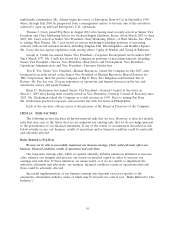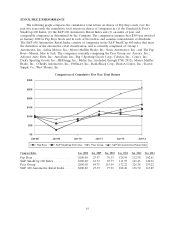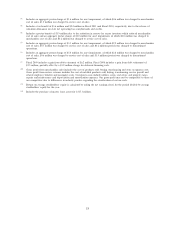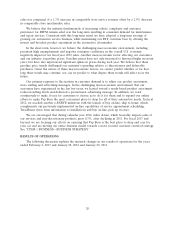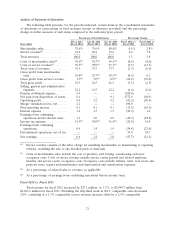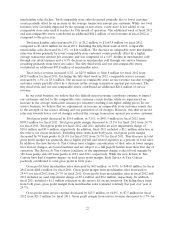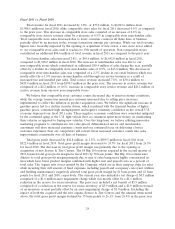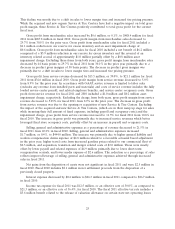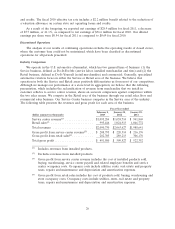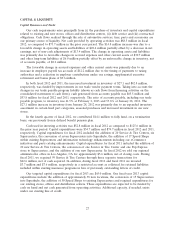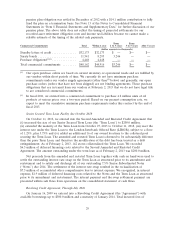Pep Boys 2012 Annual Report Download - page 59
Download and view the complete annual report
Please find page 59 of the 2012 Pep Boys annual report below. You can navigate through the pages in the report by either clicking on the pages listed below, or by using the keyword search tool below to find specific information within the annual report.sales was comprised of a 1.3% increase in comparable store service revenue offset by a 2.9% decrease
in comparable store merchandise sales.
We believe that the industry fundamentals of increasing vehicle complexity and customer
preference for DIFM remain solid over the long-term resulting in consistent demand for maintenance
and repair services. Consistent with this long-term trend, we have adopted a long-term strategy of
growing our automotive service business, while maintaining our DIY customer base by offering the
newest and broadest product assortment in the automotive aftermarket.
In the short-term, however, we believe the challenging macroeconomic environment, including
persistent high unemployment and negative consumer confidence in the overall U.S. economy,
negatively impacted our fiscal year 2012 sales. Another macroeconomic factor affecting our customers
and our industry is gasoline prices. Gasoline prices have not only increased to historical highs in recent
years, but have also experienced significant spikes in prices during each year. We believe that these
gasoline price trends challenged our customer’s spending relative to discretionary and deferrable
purchases. Given the nature of these macroeconomic factors, we cannot predict whether or for how
long these trends may continue, nor can we predict to what degree these trends will affect us in the
future.
Our primary response to fluctuations in customer demand is to adjust our product assortment,
store staffing and advertising messages. In the challenging macroeconomic environment that our
customers have experienced in the last few years, we leaned toward a needs-based product assortment,
reduced staffing levels and delivered a promotional advertising message. In addition, we work
continuously to make it easy for customers to choose us to do it for them and to expand our online
efforts to make Pep Boys the most convenient place to shop for all of their automotive needs. In fiscal
2012, we reached another e-SERVE milestone with the launch of buy on-line, ship to home, which
complements our previously implemented on-line capabilities of service appointment scheduling,
TreadSmart (tires from information to installation) and buy on-line, pick up in store.
We are encouraged that during calendar year 2012, miles driven, which favorably impacts sales of
our services and non-discretionary products, grew 0.3%, after declining in 2011. For fiscal 2013 and
beyond, we are focusing our efforts on ensuring that Pep Boys is the best place to shop and care for
your car and are moving our entire business model towards a more focused customer centered strategy.
See ‘‘ITEM 1 BUSINESS—BUSINESS STRATEGY.’’
RESULTS OF OPERATIONS
The following discussion explains the material changes in our results of operations for the years
ended February 2, 2013 and January 28, 2012 and January 29, 2011.
20


